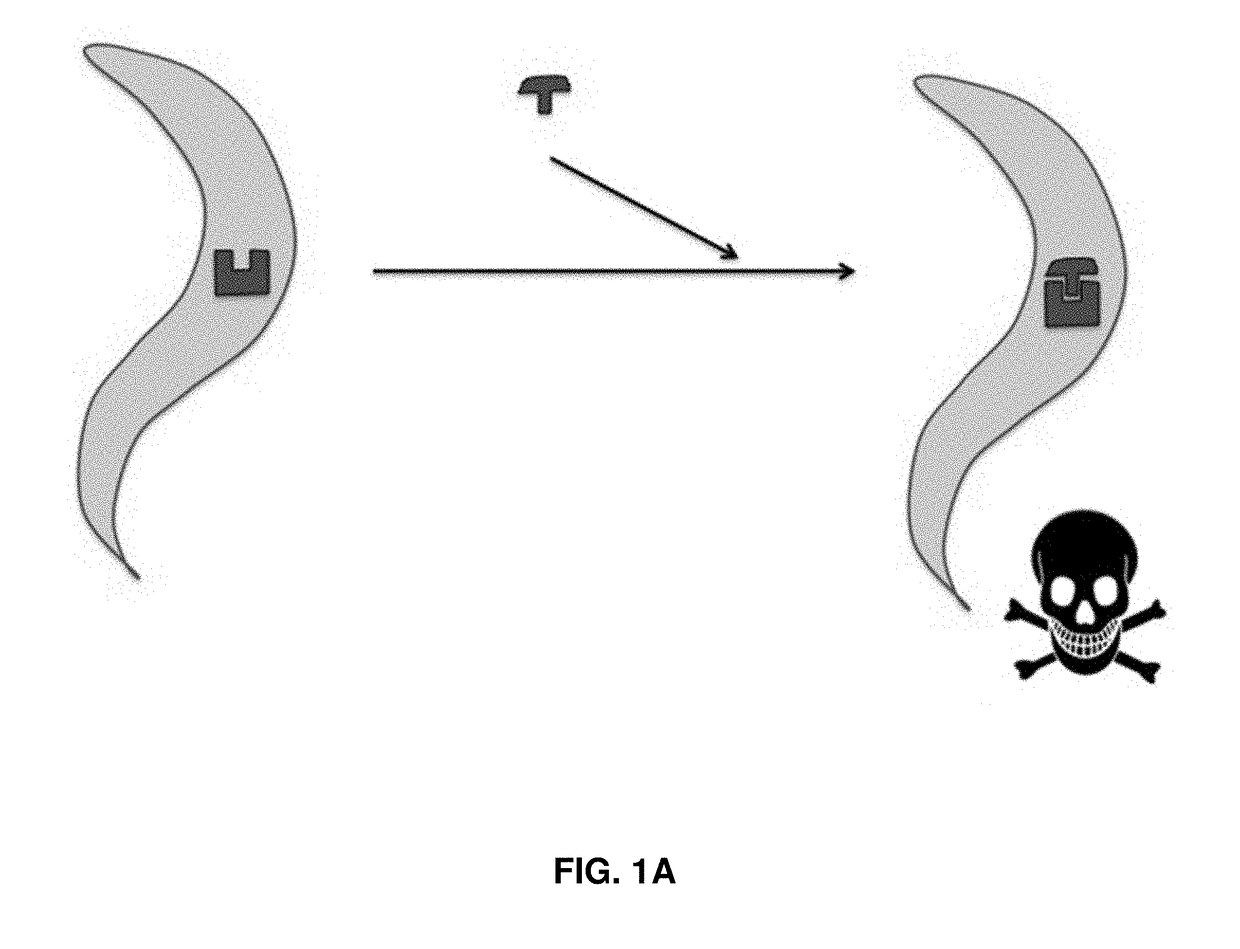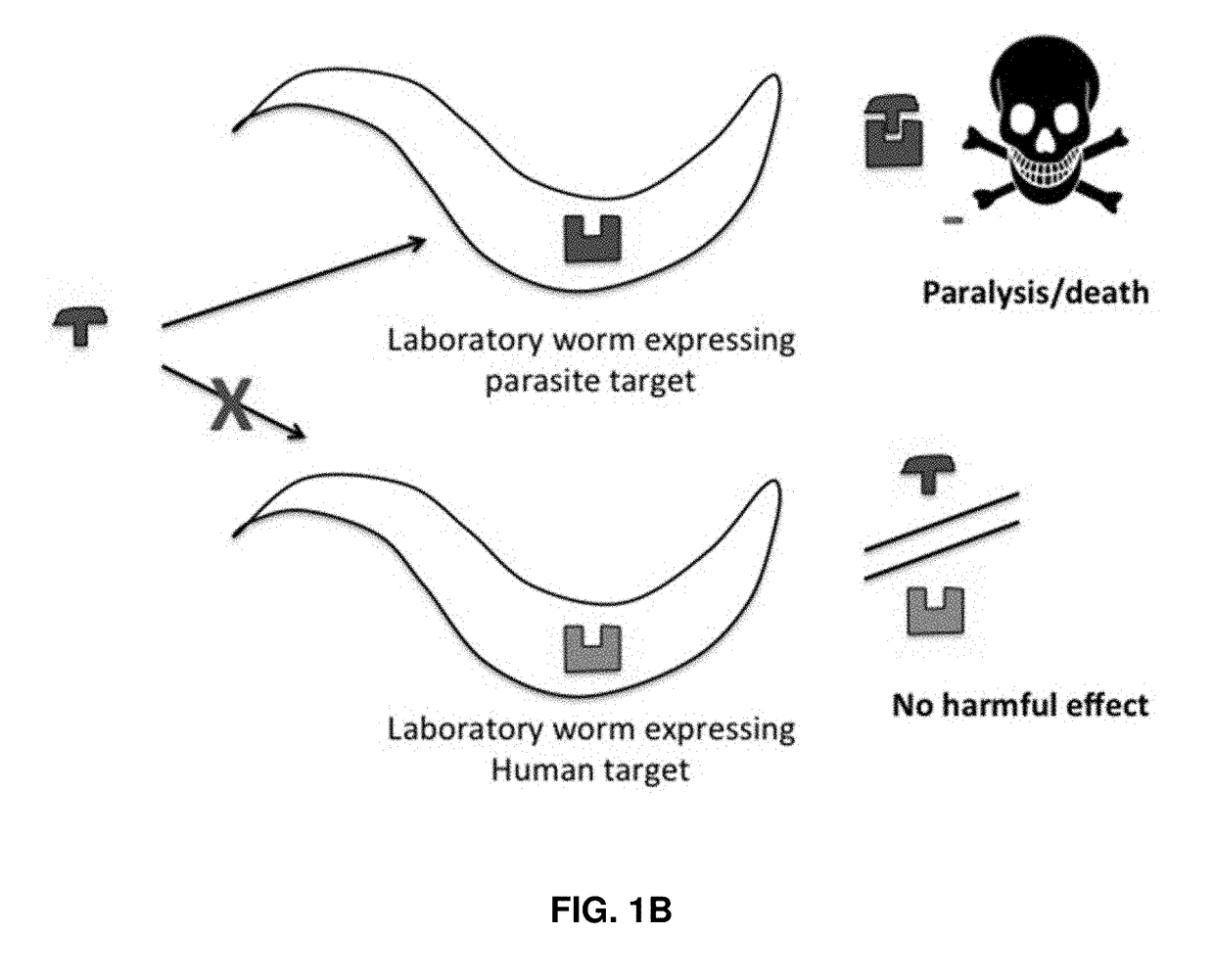Target for Anthelmintic Development, and Anthelmintics Utilizing the Same
a technology for anthelmintics and anthelminths, applied in the field of anthelminths and anthelminths utilizing the same, can solve the problems of significant morbidity, significant suffering and economic loss, and contribute to the loss of disability-adjusted life years
- Summary
- Abstract
- Description
- Claims
- Application Information
AI Technical Summary
Benefits of technology
Problems solved by technology
Method used
Image
Examples
examples
Example I—Heterologous Expression in Remodeled C. Elegans: A Platform for Monoaminergic Agonist Identification and Anthelmintic Screening
[0106]Monoamines, such as 5-HT and tyramine (TA), paralyze both free-living and parasitic nematodes when applied exogenously. Serotonergic agonists have been used to clear Haemonchus contortus infections in vivo. Since nematode cell lines are not available and animal screening options are limited, a screening platform has been developed to identify monoamine receptor agonists. Key receptors were expressed heterologously in chimeric, genetically-engineered Caenorhabditis elegans, at sites likely to yield robust phenotypes upon agonist stimulation. This approach preserves the unique pharmacologies of the receptors, while including nematode-specific accessory proteins and the nematode cuticle. Importantly, the sensitivity of monoamine-dependent paralysis can be increased dramatically by hypotonic incubation or the use of bus mutants with increased cut...
example ii
ic Compounds
[0142]A library of compounds was screened for anthelmintic activity using the platform described above in Example I. Some of the results from this screening are shown in FIGS. 9A-9B. As seen from FIGS. 9A-9B, compound CD3-718 exhibited remarkable selectivity for C. elegans 5-HT1 versus human 5-HT1, causing paralysis in C. elegans animals expressing the nematode 5-HT1 receptor, as well as wild type C. elegans, but not in animals expressing the human orthologue of the 5-HT1 receptor, and not in animals that do not express any previously identified 5-HT receptors and do not respond to exogenous 5-HT (i.e., the 5-HT quint animals). Compound CD3-718 is therefore a highly selective anthelmintic compound.
example iii
worm, and Gastrointestinal Nematode Assays
[0143]Activity of the compounds CD3-718 and CD3-664, as well as a compound referred to as CD3-276, against flea (Ctenocephalides felis), heartworm (Dirofilaria immitis), and gastrointestinal nematode (Haemonchus contortus) was examined. The compound CD3-276 has the following structure:
Compound CD3-276 is also known as N-[(Indol-3)acetyl]-D-Tyrosyl-Methionyl-D-alanine, where the “D” specifies the unnatural (opposite enantiomer) amino acid.
[0144]For the flea (FF) membrane feed assay (adult), compounds were dissolved in DMSO and aliquots were added to citrated bovine blood in membrane covered wells warmed to 37° C. Adult fleas were newly emerged (3-7 days) and unfed. Feeding wells containing approximately 10 adult fleas were placed onto the treated blood wells, and the fleas were allowed to feed on the treated blood for 24 hours. Fleas were observed for knockdown and / or death at 24 hours. Each compound was tested at half-log intervals, and endp...
PUM
| Property | Measurement | Unit |
|---|---|---|
| resistance | aaaaa | aaaaa |
| cuticular permeability | aaaaa | aaaaa |
| color | aaaaa | aaaaa |
Abstract
Description
Claims
Application Information
 Login to View More
Login to View More - R&D
- Intellectual Property
- Life Sciences
- Materials
- Tech Scout
- Unparalleled Data Quality
- Higher Quality Content
- 60% Fewer Hallucinations
Browse by: Latest US Patents, China's latest patents, Technical Efficacy Thesaurus, Application Domain, Technology Topic, Popular Technical Reports.
© 2025 PatSnap. All rights reserved.Legal|Privacy policy|Modern Slavery Act Transparency Statement|Sitemap|About US| Contact US: help@patsnap.com



